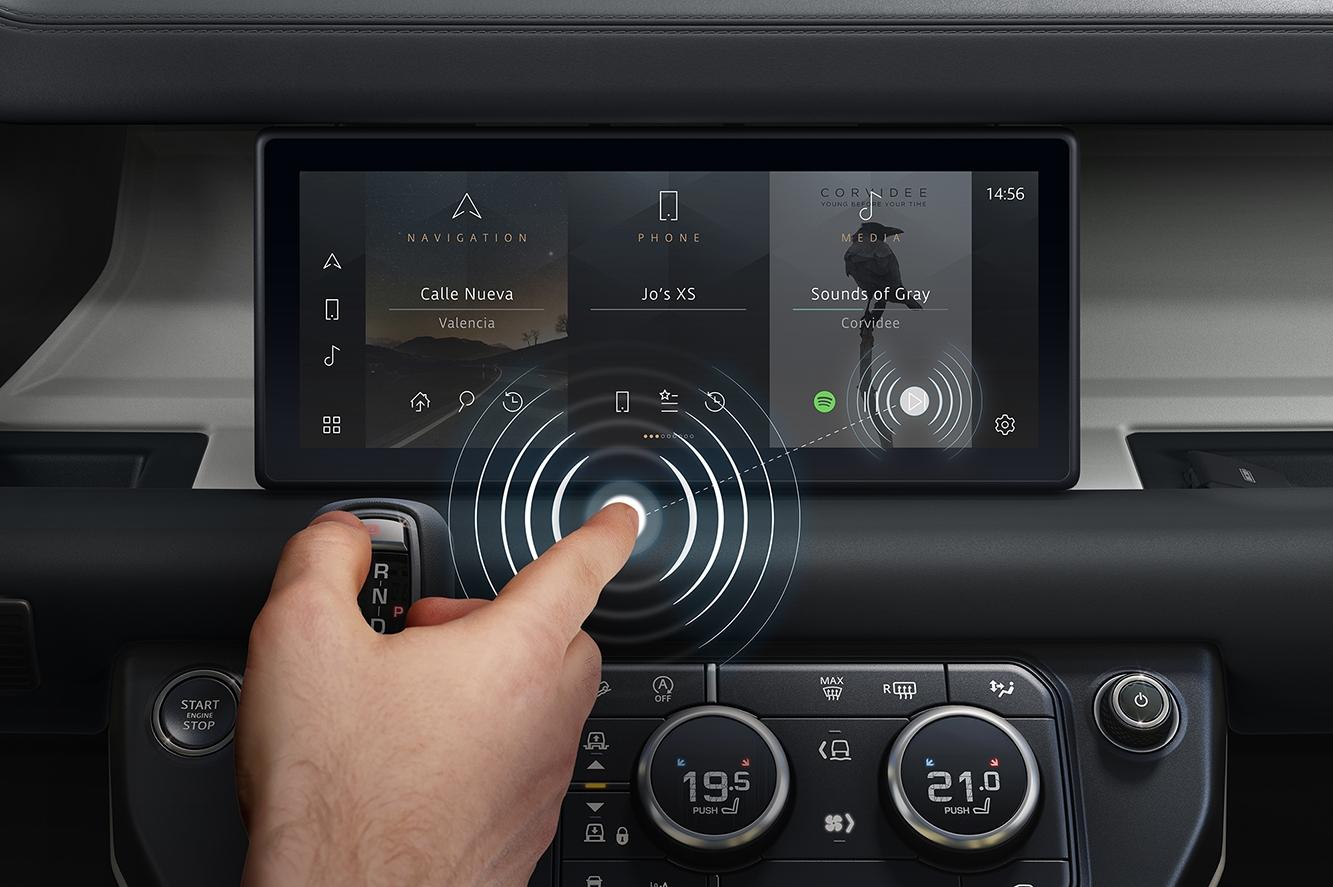
Jaguar Land Rover and the University of Cambridge are working together on an innovative project called ‛predictive touch’ which uses AI to figure out what a driver’s commanding the system to do, in particular for things like operating the sat nav or air con.
Laboratory tests and trials on the road suggest it could reduce a driver’s touchscreen interaction effort and time by up to 50%, as well as limiting the spread of bacteria and viruses.
Human Machine Interface Technical Specialist Lee Skrypchuk at Jaguar Land Rover observed, “As countries around the world exit lockdown, we notice how many everyday consumer transactions are conducted using touchscreens: railway or cinema tickets, ATMs, airport check-ins and supermarket self-service checkouts, as well as many industrial and manufacturing applications. Predictive touch technology eliminates the need to touch an interactive display and could therefore reduce the risk of spreading bacteria or viruses on surfaces. The technology also offers us the chance to make vehicles safer by reducing the cognitive load on drivers and increasing the amount of time they can spend focused on the road ahead.”
It works by using the AI to predict what the user is trying to do early on in the movement, with an added gesture tracker with vision-based or radio frequency sensors to combine information such as user profile with data available from other sensors, such as an eye-gaze tracker.
Professor Simon Godsill from Cambridge University’s Department of Engineering added, “Touchscreens and other interactive displays are something most people use multiple times per day, but they can be difficult to use while in motion. We also know that certain pathogens can be transmitted via surfaces, so this technology could help reduce the risk for that type of transmission.”
• For the latest on aircraft interior tech, click here.
